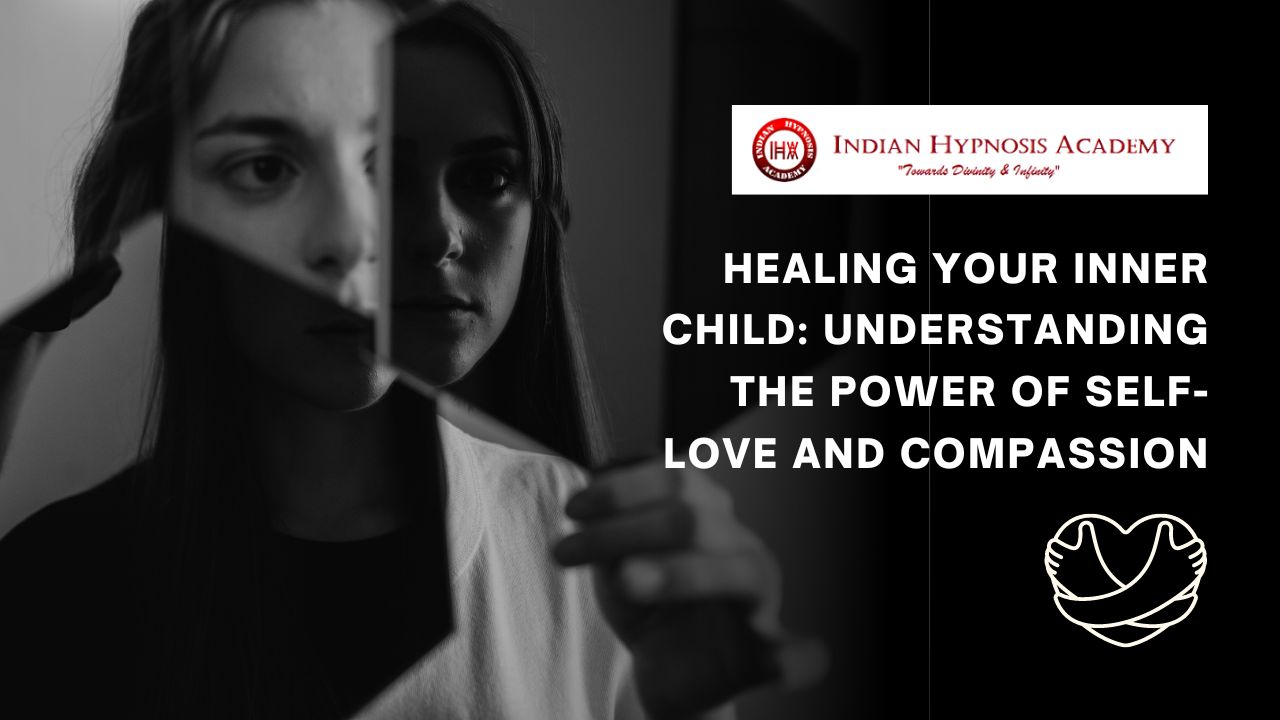Why is it important to heal your inner child?
Welcome to a journey of self-discovery and healing! In this blog post, we will delve into the depths of your inner child and explore the transformative power of self-love and compassion. Healing your inner child is not only important but necessary for personal growth and emotional well-being. So grab a cup of tea, find a cozy spot, and let’s embark on this enlightening adventure together. Are you ready to unlock the door to healing? Let’s begin!
What is your inner child?
What is your inner child? It’s that part of you that holds all the memories, emotions, and experiences from your childhood. It’s the innocent and carefree version of yourself, untainted by the worries and responsibilities of adulthood. Your inner child represents your true essence, full of curiosity, creativity, and joy.
Your inner child has a profound impact on your present-day life. Unresolved childhood wounds can manifest as emotional blocks or negative patterns in relationships or behavior. These wounds may stem from experiences such as neglect, abandonment, or trauma.
To heal your inner child means to acknowledge those painful experiences and offer love and compassion to yourself in order to release any lingering hurt or resentment. It involves creating a safe space within yourself where you can connect with that wounded part of you without judgment.
Connecting with your inner child requires patience and self-reflection. Take time to explore what triggers certain emotions or reactions in you. When these arise, pause and ask yourself: “What does my inner child need right now?”
Nurturing your inner child involves engaging in activities that bring you joy – whether it be playing games, painting pictures, dancing freely – anything that allows for self-expression without inhibition.
By tending to your inner child’s needs with love and understanding, you are able to create a deeper sense of self-acceptance and develop healthier relationships with others as well.
Remember: healing your inner child is an ongoing process; it takes time but is undoubtedly worth the effort. By cultivating self-love and compassion towards this vulnerable part within us all, we pave the way towards personal growth and emotional freedom.
How can you start the healing process?
Starting the healing process for your inner child may feel overwhelming at first, but with patience and dedication, it is possible to embark on this transformative journey. Here are some steps you can take to begin your healing process:
1. Acknowledge and validate your emotions: Take a moment to acknowledge any pain or trauma from your past that still affects you today. Allow yourself to feel these emotions without judgment or shame.
2. Connect with your inner child: Find a quiet space where you can sit comfortably and close your eyes. Visualize yourself as a child, perhaps around 5 or 6 years old. Imagine embracing this younger version of yourself with love, compassion, and understanding.
3. Journaling: Writing down your thoughts and feelings can be a powerful tool in healing your inner child. Set aside time each day to write about any memories or experiences that come up during this process.
4. Seek professional help if needed: Healing deep emotional wounds may require support from a therapist or counselor who specializes in inner child work. They can provide guidance and techniques tailored specifically for your needs.
5. Practice self-care: Engage in activities that nurture and nourish both your physical and emotional well-being such as exercise, meditation, spending time in nature, practicing mindfulness, or engaging in creative pursuits like art or music.
Remember that healing takes time; be patient with yourself throughout this journey of rediscovery and self-love.
The importance of self-love and compassion
The importance of self-love and compassion cannot be overstated. When it comes to healing your inner child, these qualities are absolutely crucial. Self-love allows you to embrace all aspects of yourself, including the wounded parts that need healing. It involves accepting yourself unconditionally, flaws and all.
Compassion, on the other hand, involves having empathy for yourself and treating yourself with kindness and understanding. It means recognizing that your inner child may have experienced pain or trauma in the past, and offering comfort and support to those younger parts of yourself.
By cultivating self-love and compassion, you create a safe space within yourself for healing to occur. You become your own nurturing parent figure who can provide the love, care, and understanding that your inner child needs.
Practicing self-love also helps you develop a healthier relationship with others. When you learn to love and accept yourself deeply, it becomes easier to extend that same love and acceptance towards others.
Remember: Healing your inner child is not about seeking external validation or approval. It’s about building an internal foundation of self-worth based on genuine love for oneself.
Incorporating practices such as mindfulness meditation, journaling, therapy sessions can help cultivate self-love and compassion in your life. These practices allow you to connect with your emotions on a deeper level while providing a platform for reflection without judgment.
Nurturing activities like spending time in nature or engaging in hobbies that bring joy can also foster feelings of self-compassion by allowing moments of pure enjoyment without any expectations or pressures.
Ultimately remember this: You deserve love; from both others but most importantly from YOURSELF! By practicing self-love daily we open ourselves up for growth & transformation as well as creating healthy relationships based on mutual respect & kindness.
Tips for healing your inner child
1. Acknowledge and Validate Your Feelings: The first step in healing your inner child is to acknowledge and validate the feelings that arise from past experiences. Allow yourself to feel the pain, sadness, or anger that may have been suppressed for years. By acknowledging these emotions, you are giving yourself permission to heal.
2. Practice Self-Compassion: Treat yourself with kindness and compassion as you would a young child. Offer self-soothing words of comfort during difficult moments and remind yourself that it’s okay to make mistakes or experience setbacks along the healing journey.
3. Reconnect with Activities You Loved as a Child: Engaging in activities that bring joy can help reconnect with your inner child. Whether it’s painting, dancing, playing an instrument, or exploring nature, find ways to tap into that sense of wonderment and playfulness again.
4. Seek Support from Others: Healing your inner child can be challenging on your own. Reach out to trusted friends, family members, or even seek professional therapy if needed. Sharing your experiences with others allows for validation and support on your healing path.
5. Practice Self-Love Rituals: Incorporate daily self-love rituals into your routine such as journaling positive affirmations about yourself or engaging in mindfulness exercises like meditation or deep breathing techniques.
6. Thank Your Inner Child for Their Resilience: Recognize the strength within you by expressing gratitude towards your inner child who endured difficult times but still carried on. Thank them for their resilience and bravery throughout the healing process.
Remember that everyone’s healing journey is unique; therefore it’s important to be patient with yourself and allow time for growth and transformation.
Conclusion
Healing your inner child is a powerful and transformative journey that can bring profound healing and growth into your life. It is important to recognize the impact of past experiences on our present selves and to take steps towards nurturing, loving, and healing our inner child.
By understanding what your inner child is and acknowledging its presence within you, you can begin the process of healing. Through self-reflection, therapy, or other healing modalities, you can uncover deep-rooted wounds and work towards addressing them with love and compassion.
Self-love and compassion are essential components in the healing process. By cultivating these qualities within yourself, you create a safe space for your inner child to heal. Practice self-care rituals, set boundaries, engage in activities that bring joy and fulfillment – all acts of love towards yourself.
Here are some tips to support you on this journey:
1. Connect with your inner child: Spend time connecting with the younger version of yourself through journaling or visualization exercises. Ask questions like “What do you need?” or “How can I support you?”
2. Validate your emotions: Allow yourself to feel all emotions without judgment or criticism. Validate any pain or sadness that arises from past experiences.
3. Seek professional help if needed: If trauma or unresolved issues from childhood persistently affect your daily life, consider seeking the guidance of a therapist who specializes in inner child work.
4. Practice forgiveness: Forgive those who may have hurt you in the past – including yourself – as part of releasing emotional baggage tied to old wounds.
5. Embrace playfulness: Engage in activities that ignite joy and playfulness within you! Dance freely to music, draw colorful pictures just for fun – let go of inhibitions!
Remember that healing takes time; be patient with yourself throughout this process. Celebrate each small step forward as an act of self-love.
As we heal our own inner child wounds through self-love and compassion, we create a ripple effect of healing in our relationships and our world. Let us continue to open our hearts to the love that resides within us all!



